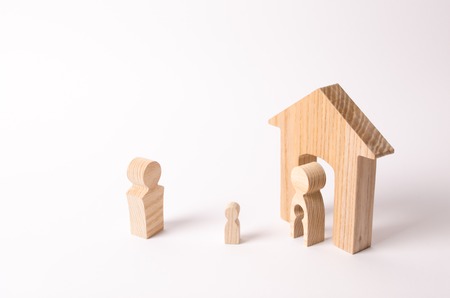1. Understanding the Power of First Impressions
When it comes to selling a home, first impressions are everything. Buyers often make up their minds within seconds of seeing a property — sometimes even before stepping inside. That’s why top real estate agents emphasize the importance of curb appeal and the initial walkthrough. A well-staged exterior sets the tone for the entire showing and can significantly influence how buyers perceive the rest of the home.
Why Curb Appeal Matters
The exterior of your home is like the cover of a book — it invites people to look inside or turn away. A clean, inviting, and well-maintained front yard tells buyers that the home has been cared for, which builds confidence in what they’ll find inside. Top agents know that even small upgrades can make a big difference.
Key Elements of Great Curb Appeal
| Feature | Recommended Improvements |
|---|---|
| Front Lawn | Mow regularly, edge borders, remove weeds |
| Landscaping | Add fresh mulch, trim bushes, plant seasonal flowers |
| Exterior Walls & Paint | Power wash siding, touch up paint where needed |
| Front Door | Repaint in a bold but neutral color, update hardware |
| Lighting | Install bright, welcoming porch lights |
The Entryway Experience
Once buyers step through the front door, their senses kick into high gear. A clean, clutter-free entryway with warm lighting and subtle décor can create an emotional connection right away. Real estate pros recommend depersonalizing this space so potential buyers can envision themselves living there.
Entryway Staging Tips from Top Agents
- Keep it simple: Avoid over-decorating; use a mirror or artwork to open up the space.
- Add functionality: A small bench or console table can suggest practical everyday use.
- Scent matters: Use light, pleasant scents like vanilla or citrus to create a welcoming atmosphere.
- Lighting is key: Make sure the area is well-lit with natural or artificial light.
Pro Tip:
A fresh welcome mat and a potted plant by the door can go a long way in making your home feel approachable and move-in ready. These little touches show buyers that every detail has been considered.
Curb appeal and a thoughtful entryway aren’t just about beauty — they’re about creating trust and excitement from the very first moment someone sees your home. Top agents know that investing time here sets the stage for a successful showing.
2. Declutter, Depersonalize, and Define Spaces
One of the most powerful ways top real estate agents make a home feel more spacious, clean, and welcoming is by following three golden rules: decluttering, depersonalizing, and clearly defining each room’s purpose. These strategies help buyers visualize themselves living in the space, which can lead to faster offers and better selling prices.
Declutter to Maximize Space
Too much stuff makes rooms feel smaller and chaotic. Elite agents recommend removing unnecessary items from every surface—kitchen counters, coffee tables, bathroom vanities, and even closets. A clutter-free home allows buyers to focus on the actual features of the property instead of being distracted by personal belongings or crowded shelves.
Tips to Declutter Effectively:
| Area | What to Remove |
|---|---|
| Living Room | Extra furniture, magazines, remote controls, pet toys |
| Kitchen | Appliances on countertops, fridge magnets, dish racks |
| Bedrooms | Laundry baskets, excess pillows, personal collections |
| Bathrooms | Toiletries on counters, floor mats, unused towels |
Depersonalize to Help Buyers Imagine Themselves There
Buyers need to see your house as their future home—not yours. That means removing family photos, kids artwork, religious items, and anything overly personal. Neutral spaces allow them to project their own style and life into the room.
Simple Depersonalization Tips:
- Replace personal photos with neutral art or mirrors
- Store away unique collectibles or bold décor that may not appeal to everyone
- Aim for a clean slate look that feels fresh and inviting
Define Every Rooms Purpose Clearly
A common mistake sellers make is leaving rooms undefined or using them for multiple purposes—like a guest room that’s also a storage area. Top agents stress the importance of making it obvious what each space is meant for. This helps buyers understand how they can use the space in their own lives.
Room Definition Ideas:
| Room Type | Create This Look |
|---|---|
| Nook or Small Room | Add a desk and chair to show it as a home office |
| Bare Guest Room | Add a bed and nightstand so its clearly a sleeping space |
| Mudroom Area | Add hooks and a bench to show its function for storage and entryway use |
The key takeaway: when you declutter, depersonalize, and define each area of your home with intention, youre not just cleaning up—you’re helping potential buyers emotionally connect with the space. That connection is what drives strong offers in today’s market.
![]()
3. Using Neutral Colors and Strategic Lighting
One of the top home staging secrets from professional real estate agents is the power of neutral colors and smart lighting choices. These elements can dramatically impact how a potential buyer feels when they walk through a home, helping them imagine their own life in the space.
Why Neutral Colors Work
Neutral tones like whites, beiges, soft grays, and warm taupes create a clean, fresh canvas that appeals to a wide range of buyers. Bright or bold colors might reflect personal taste, but neutrals keep things open and inviting. They also make rooms appear larger, brighter, and more cohesive.
Top Recommended Neutral Paint Colors by Real Estate Pros
| Paint Color | Description | Best Use Areas |
|---|---|---|
| Benjamin Moore – Revere Pewter | A light gray with warm undertones | Living Rooms, Hallways |
| Sherwin-Williams – Agreeable Gray | A balanced greige (gray + beige) | Main Living Areas, Bedrooms |
| Behr – Swiss Coffee | A soft white with warmth | Kitchens, Bathrooms |
| Sherwin-Williams – Alabaster | Creamy white with depth | Entryways, Ceilings, Trim |
The Role of Strategic Lighting in Home Staging
The right lighting sets the mood and highlights your home’s best features. Top agents recommend using a mix of natural light and layered lighting to create a welcoming vibe throughout the house.
Types of Lighting You Should Incorporate
- Natural Light: Open curtains and blinds during showings to let sunlight flood the rooms. Clean windows to maximize brightness.
- Ambient Lighting: Overhead lights that provide general illumination—think ceiling fixtures or recessed lighting.
- Task Lighting: Lights focused on specific areas like kitchen counters or reading nooks—such as under-cabinet lights or desk lamps.
- Accent Lighting: Decorative lights that highlight artwork, architectural details, or plants—like wall sconces or picture lights.
Lighting Tips from Realtors:
- Use daylight LED bulbs with a color temperature around 2700K–3000K for a warm and inviting glow.
- Add floor lamps or table lamps in darker corners to eliminate shadows and make rooms feel larger.
- If overhead lighting is outdated or dim, consider replacing fixtures with modern, energy-efficient options.
Together, neutral color palettes and strategic lighting help create an environment where buyers can easily visualize themselves living comfortably in the home. It’s about making spaces feel open, bright, and emotionally inviting—all key factors in getting your property sold quickly and at top dollar.
4. Highlighting Key Selling Features
Top real estate agents know that when it comes to selling a home, first impressions count. That’s why staging is all about drawing attention to the property’s most valuable and attractive features. Whether its a modern kitchen, original hardwood floors, or an open-concept layout, smart staging helps buyers instantly connect with the space.
Focus on Architectural Details
If your home has unique elements like exposed beams, crown molding, or arched doorways, these should be highlighted during staging. Agents recommend using neutral paint colors and proper lighting to make these features stand out without overwhelming the space. For example, placing accent lighting near a stone fireplace or keeping window treatments minimal to showcase bay windows can make a big difference.
Make the Kitchen Shine
Kitchens are often deal-makers in a sale. A freshly staged kitchen doesn’t necessarily mean a full renovation—it could be as simple as replacing cabinet hardware, adding under-cabinet lighting, and clearing countertops. Staging pros also suggest setting the scene with a bowl of fresh fruit or stylish cookbooks to create an inviting atmosphere.
Kitchen Staging Ideas
| Staging Element | Purpose |
|---|---|
| Fresh flowers or fruit bowl | Adds color and life |
| Neutral dishware display | Makes shelves look organized and appealing |
| Modern light fixtures | Updates the look instantly |
| Clean, clutter-free counters | Makes the space feel larger |
Enhance Open Floor Plans
Open layouts are highly desirable in todays market, but they can sometimes feel too empty or undefined. Staging experts use rugs, furniture placement, and lighting to help define each area—like creating a cozy conversation zone in the living room or a work-from-home nook near a window. This helps buyers imagine how they would live in the space.
Tips for Staging Open Spaces:
- Use area rugs to define separate zones within one large room.
- Create visual flow with complementary color schemes and decor styles.
- Avoid over-furnishing—less is more when showcasing spaciousness.
By emphasizing what makes your home special through thoughtful staging, you not only attract more buyers but also increase perceived value—which can lead to quicker offers at better prices.
5. Creating Lifestyle Vignettes
One of the most powerful strategies top real estate agents use in home staging is creating lifestyle vignettes. These are small, thoughtfully designed areas within a home that tell a story or highlight how a space can be used. The goal is to spark the buyer’s imagination and help them emotionally connect with the property.
What Is a Lifestyle Vignette?
A lifestyle vignette is a mini-scene set up in a specific area of the home that showcases a particular activity or mood. Instead of just decorating a room, it paints a picture of what life could look like there. Think of it as setting the stage for daily living—helping buyers visualize themselves relaxing, entertaining, or working in that space.
Popular Vignette Ideas Used by Top Agents
| Vignette Type | Description | Emotional Trigger |
|---|---|---|
| Cozy Reading Nook | An armchair with a soft throw, side table, and warm lighting near a window or corner | Comfort, relaxation, personal retreat |
| Elegant Dining Setup | A fully set dining table with plates, glasses, and fresh flowers | Entertaining guests, family dinners |
| Work-from-Home Space | A tidy desk with minimal decor and good lighting in a quiet nook | Productivity, convenience |
| Morning Coffee Spot | Bistro table and chairs on a patio with mugs and a plant centerpiece | Peaceful mornings, outdoor enjoyment |
Why They Work
Lifestyle vignettes work because they go beyond design—they tap into feelings. When buyers walk into a house and see these little moments staged throughout the home, they don’t just see furniture; they see potential memories. A cozy reading corner might remind them of Sunday mornings with coffee and books. A styled dining table might make them imagine hosting Thanksgiving dinner.
Tips for Creating Effective Vignettes
- Keep it simple – avoid clutter so the purpose of the space is clear.
- Use natural light when possible to make spaces feel more inviting.
- Add personal touches like books, candles, or fresh flowers to enhance realism.
- Choose neutral colors to appeal to a broad range of tastes.
Lifestyle vignettes are subtle but powerful tools in home staging. They help transform an ordinary room into an emotional experience—and that’s often what sells homes faster and for better prices.
6. Professional Photography and Virtual Staging Tips
In today’s digital-first real estate market, your online listing is often the first impression buyers get—and high-performing agents know that professional photography and virtual staging can make all the difference. These tools help your home stand out in a crowded marketplace and drive more interest from potential buyers before they even step inside.
Why Professional Photos Matter
Listings with high-quality photos consistently attract more views and showings. Buyers tend to scroll through dozens of listings, and eye-catching images can stop them in their tracks. Top agents understand this and always invest in professional photography to highlight a home’s best features—like natural light, open layouts, or updated finishes.
Benefits of Professional Real Estate Photography
| Feature | Benefit |
|---|---|
| Wide-angle lenses | Makes rooms look more spacious |
| Proper lighting techniques | Enhances clarity and warmth of the space |
| High-resolution images | Keeps details crisp on all devices |
| Photo editing | Corrects color balance and removes distractions |
The Power of Virtual Staging
If the home is vacant or has outdated furniture, virtual staging is a cost-effective way to show buyers what’s possible. Using digital tools, top agents can add stylish furnishings, décor, and even change wall colors to create an inviting atmosphere—all without lifting a finger. This helps buyers visualize themselves living in the space.
When to Use Virtual Staging
- Vacant homes: Empty rooms can feel cold or smaller than they really are.
- Dated interiors: Digital updates can modernize the look instantly.
- Diverse buyer preferences: Create multiple design styles to appeal to different tastes.
Tips from Top Agents
- Shoot during daylight hours: Natural light makes interiors look warm and welcoming.
- Avoid over-editing: Keep images realistic so expectations match reality.
- Add captions to photos: Highlight special features like hardwood floors or new appliances.
- Create a virtual tour: Video walkthroughs or 3D tours give buyers a better sense of layout.
The Bottom Line
Your listing photos are your online storefront. By using professional photography and smart virtual staging, you’ll attract more clicks, more showings, and ultimately better offers—just like the top real estate agents do every day.


